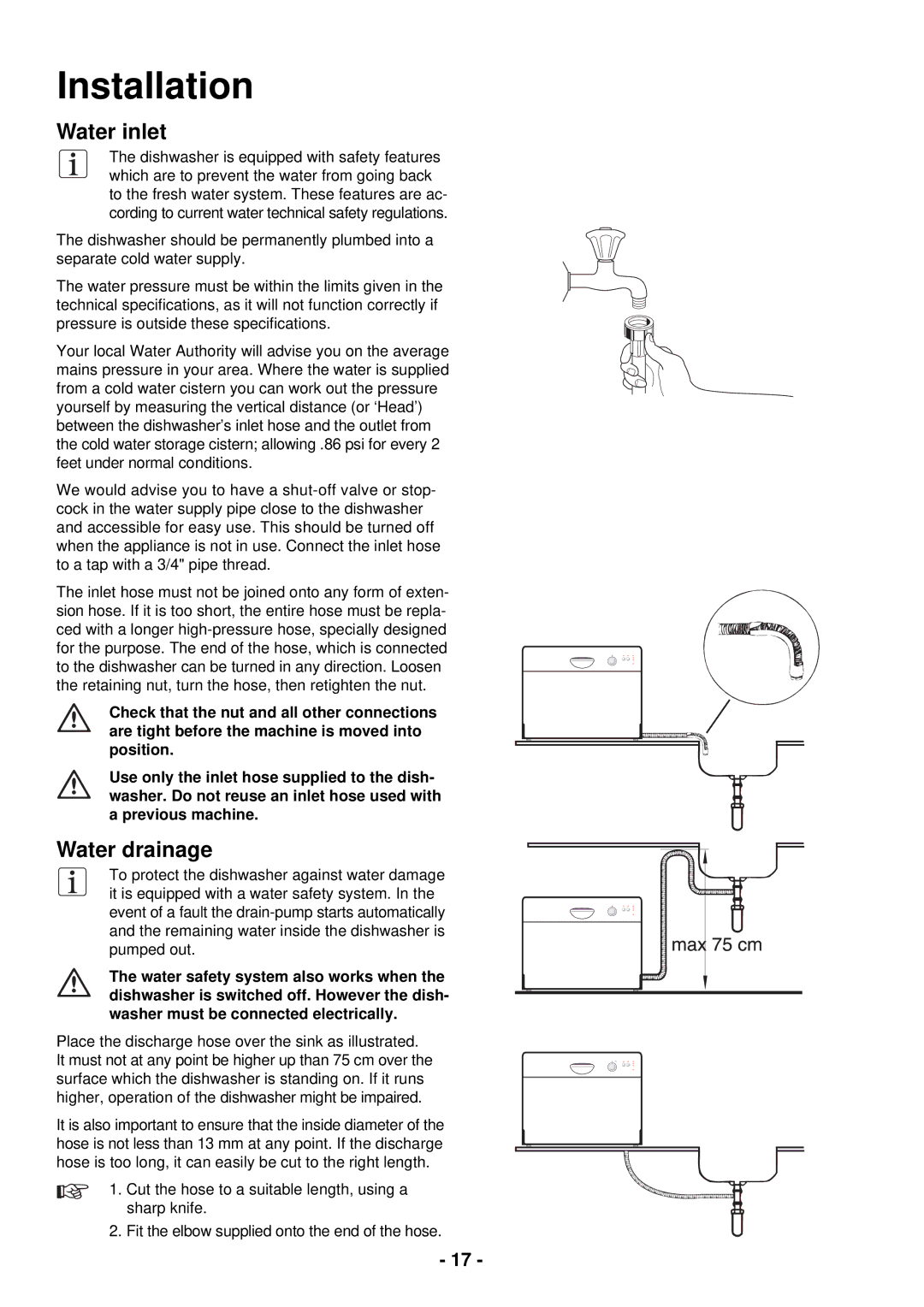
Installation
Water inlet
The dishwasher is equipped with safety features which are to prevent the water from going back to the fresh water system. These features are ac- cording to current water technical safety regulations.
The dishwasher should be permanently plumbed into a separate cold water supply.
The water pressure must be within the limits given in the technical specifications, as it will not function correctly if pressure is outside these specifications.
Your local Water Authority will advise you on the average mains pressure in your area. Where the water is supplied from a cold water cistern you can work out the pressure yourself by measuring the vertical distance (or ‘Head’) between the dishwasher’s inlet hose and the outlet from the cold water storage cistern; allowing .86 psi for every 2 feet under normal conditions.
We would advise you to have a
The inlet hose must not be joined onto any form of exten- sion hose. If it is too short, the entire hose must be repla- ced with a longer
Check that the nut and all other connections are tight before the machine is moved into position.
Use only the inlet hose supplied to the dish- washer. Do not reuse an inlet hose used with a previous machine.
Water drainage
To protect the dishwasher against water damage it is equipped with a water safety system. In the event of a fault the
The water safety system also works when the dishwasher is switched off. However the dish- washer must be connected electrically.
Place the discharge hose over the sink as illustrated. It must not at any point be higher up than 75 cm over the surface which the dishwasher is standing on. If it runs higher, operation of the dishwasher might be impaired.
It is also important to ensure that the inside diameter of the hose is not less than 13 mm at any point. If the discharge hose is too long, it can easily be cut to the right length.
1. Cut the hose to a suitable length, using a sharp knife.
2. Fit the elbow supplied onto the end of the hose.
- 17 -
